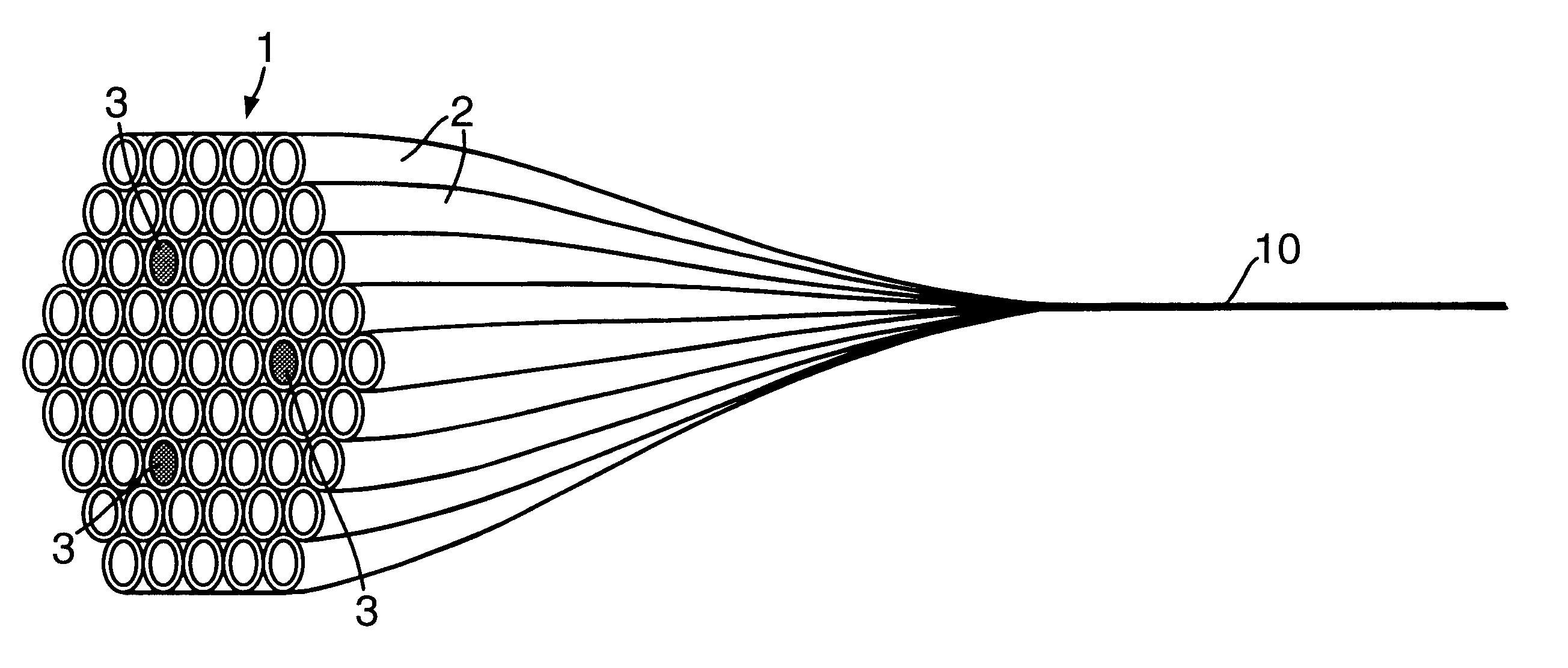Multicore optical fibre
a multi-core, optical fiber technology, applied in the field of optical fibers, can solve the problems of time-consuming and costly process, difficult to make multi-core fibers with the required uniformity and geometric accuracy, and relatively few applications for multi-core optical fibers
- Summary
- Abstract
- Description
- Claims
- Application Information
AI Technical Summary
Benefits of technology
Problems solved by technology
Method used
Image
Examples
Embodiment Construction
Single-core photonic crystal fibre is made by a stack and draw process as described by J. C. Knight et al., "All silica single-mode optical fiber with photonic crystal cladding", Optics Letters 21 (1996) 1547-1549. The fibre comprises a cladding of an array of air holes that run along the length of the fibre. The holes are arranged in a hexagonal honeycomb pattern across the cross-section, with a spacing of the order of microns. Such a repeating structure with a period of the order of an optical wavelength is called a photonic crystal. However, the central hole is absent, leaving a solid silica "defect" in the crystal structure that acts as the core of the fibre. Light is guided in this core by total internal reflection from the cladding, which effectively has a lower refractive index. The effective index of the photonic crystal cladding has unusual properties that can enable the fibre to be single-mode under all circumstances, unlike conventional step-index fibres. This property is...
PUM
| Property | Measurement | Unit |
|---|---|---|
| refractive index | aaaaa | aaaaa |
| internal diameter | aaaaa | aaaaa |
| internal diameter | aaaaa | aaaaa |
Abstract
Description
Claims
Application Information
 Login to View More
Login to View More - R&D
- Intellectual Property
- Life Sciences
- Materials
- Tech Scout
- Unparalleled Data Quality
- Higher Quality Content
- 60% Fewer Hallucinations
Browse by: Latest US Patents, China's latest patents, Technical Efficacy Thesaurus, Application Domain, Technology Topic, Popular Technical Reports.
© 2025 PatSnap. All rights reserved.Legal|Privacy policy|Modern Slavery Act Transparency Statement|Sitemap|About US| Contact US: help@patsnap.com


